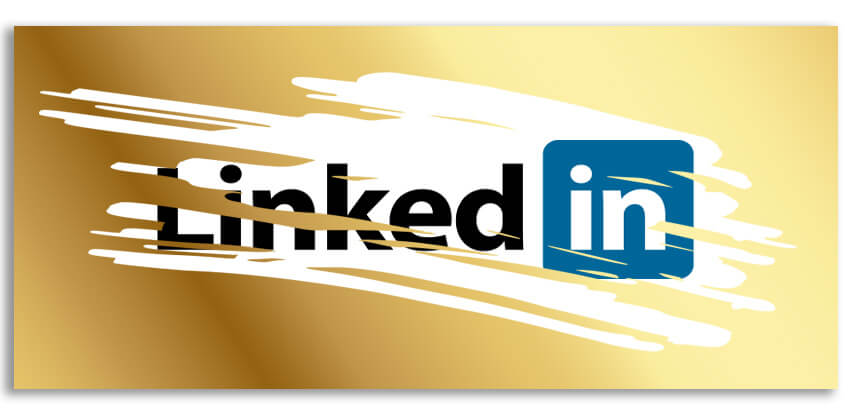
As a career advice author and former recruiter, I have received hundreds of LinkedIn messages asking for help, advice, and introductions to employers.
I cannot always reply to all of them, due to lack of time.
However, what I have realized is: Certain types of messages are far more likely to get replies from me. Others are not.
After discussing this with colleagues including fellow recruiters, coaches, and other experts, I have found that they follow a similar pattern when deciding which messages to respond to.
4 Ineffective LinkedIn Messages Job Seekers Send (and What to Send Instead)
In this article, I am going to reveal four common messages job seekers send that typically do not get a response. Then, I will share what to send instead. And, then, you will start getting replies from recruiters, hiring managers, and anyone else you are reaching out to in your job hunt.
1. “Can you take a look at my profile, and see which jobs I’m a fit for?”
This is a common message received by anyone with “Recruiter” in their LinkedIn headline. While this may get you a quick glance from a desperate or inexperienced recruiter, it is not going to get the best recruiters jumping to help you.
Why this won’t get a response:
Recruiters receive many messages like this each week, and most people who send them are not qualified for any of the roles that the recruiter is working on at the moment.
In fact, some people sending this type of message are not even in the same field or industry as the recruiter. Most likely, this person sent exactly the same message to many recruiters without knowing any of them.
What to send instead:
You will get more replies if you do a bit of research and make it clear that you have checked out their profile to make sure their work aligns with your background.
Then, tell them a bit about what you do so they can get a basic idea without clicking your profile. After that, they are more likely to click and read your full profile and then reply to your message.
Example message:
“Hi [NAME]. I saw you recruit in the sales and marketing here in Chicago. I am a Sales Lead at XYZ Company, and I’m considering a change. Do you know of any Sales Manager positions here in the city? Would love to talk if so. Thank you for your time!”
Why the revised message will likely succeed:
- The sender knows the recruiter’s focus and location and is asking an appropriate question that fits the recruiter’s needs.
- The message is specific about the job seeker’s goals and location which is a match for the recruiter’s location.
Recruiters typically specialize in an industry or niche, so that is important to consider before clicking “send.” Being appropriate and specific rather than generic increases the likelihood that the message will be read and responded to.
2. “Please look at my resume/LinkedIn, and let me know what to improve”
While it does only take a few seconds to look at your resume and gather a first impression, writing constructive feedback that will actually help you takes much longer.
Why this won’t get a response:
This request is never just a “small” one, and, while many job seekers ask me for “just 5 minutes” of my time when making this request, analyzing the resume or LinkedIn profile and providing a useful feedback takes much more than 5 minutes.
Like the message above, this places 100% of the workload on the person receiving the message. Assuming the recruiter is successful and occupied with their own day-to-day work, they are very unlikely to stop all of that and work — for free — to answer your request.
What to send instead:
Start small, and ask their opinion on one thing you are debating or struggling with on your resume or LinkedIn profile. Show them you have put thought into this already, and, then, give them one specific question to answer.
This can open the door to building a relationship and getting to know them, and eventually seeing if they’re open to helping with more. However, if you want a reply to your first message, you should always ask for one specific thing.
Example Message:
“Hi, Beth. I really liked your post about resume formatting last week. It was so helpful! Do you have any thoughts on whether a Skills section should appear before or after the Work Experience section? I’m on the fence about this with my own resume.”
Why the revised message will likely succeed:
- By showing you have researched the person or read/followed their work in the past, you greatly boost your chance of hearing a response.
- You are asking one specific question rather than a general one which requires much of their time to analyze and to respond.
Telling them that you have seen arguments for two different approaches is also a great way to get their take on which approach is “right.” Most experts cannot resist the urge to share their opinion if you present two options, and they feel one is right and one is wrong. So this tactic is definitely worth trying!
3. “Can you forward my resume/LinkedIn to the hiring team for X position?”
Recruiters and HR staff receive many requests like this every day.
Why this won’t get a response:
Effectively, by sending this message to the hiring team, the recruiter is recommending the candidate. While a recruiter may do this type of favor for a colleague or someone they have spoken to in the past, they are unlikely to do it for a stranger.
What to send instead:
The best way to get around this is to build a relationship before asking.
One conversation-starter that works very well is to tell them you were doing some research and considering applying for the job, but were wondering how they would describe the work environment, and whether they have enjoyed the company since joining.
This is a simple, non-threatening question where you are asking for one person’s genuine opinion (so they will immediately understand why you thought to message them).
Example Message:
“Hi, Tim. I saw an IBM job posting recently for an Enterprise Project Manager role. Is that the group you’re in? I was curious how you have enjoyed the work environment there since coming over from Apple 2 years ago. I have read some great Glassdoor reviews of IBM online but I always like to ask someone first-hand, too.”
Why the revised message will likely succeed:
- This is a small request, so the recipient is more likely to reply.
- You are also confirming that they work in the relevant department/group.
- Finally, you’re showing you have done some research and checked out their profile.
Any time you can add a bit of personalization to your message, you should. Nobody’s going to put more effort into your job search than you’re putting, so making this extra effort goes a long way toward getting people to want to help you.
4. Messages with attachments
Why this won’t get a response:
When you receive a message on LinkedIn and open it to begin reading, LinkedIn first shows you the bottom of the message. Then, you scroll up to begin reading at the top.
Why this won’t get a response:
When someone receives a PDF attachment, for example, they see that PDF attachment before they have read a word from you — definitely not the ideal way to start a conversation.
This is too direct/pushy to get a response, and may even stop them from scrolling up to read your message at all. Also, salespeople often attach things to a first message, so that’s one more reason the reader will have their guard up when they see it, and one additional reason to not do this.
What to send instead:
You will be more successful by building a relationship first. Do this by asking a single question or asking their advice on one specific thing, with no attachments. Then, offer to attach the related document later in the conversation, once they know you.
Example Message:
“Hi, Jamie. I am a big fan of your job search content here on LinkedIn! Do you have any thoughts on putting two different Skills sections on a resume? For example, ‘Technical Proficiencies’ and ‘Other Skills’? I’m considering this for my own resume.”
After they reply, you could ask if you can attach your resume to have them take a quick look at the related section. While not everyone will say “yes,” this is a reasonable request and many people will agree to it.
Why the revised message will likely succeed:
- A large attachment will not be the first thing they see in your message.
- They will read your message and understand your request before seeing the document you want them to review.
- You are showing professional courtesy by not assuming they have the time and inclination to analyze your resume (or whatever you want to attach).
With the focus created by your question, this is much more effective than asking them to review your entire resume and send general feedback.
“Cold” Message Success Rules
Any time you’re messaging someone for the first time, follow these rules and you will get more responses.
- Ask for something small to start
- Show you have done some research and put in effort already (research into the topic and/or into the person you’re contacting)
- Personalize the message for this individual. Always have at least one spot that you have personalized, so they know the message is not a cut & paste message sent to multiple people
- Avoid attachments, which can overwhelm the reader or make your message appear like a sales pitch
In addition, make your message as concise as possible. I read almost every short message I receive; I’m more picky about whether to read a longer one. The reason is simple: It takes far longer to read a lengthy message with multiple, big paragraphs.
Reading one or two short paragraphs takes almost no time, so I usually read them to see what the person wants, even if I am having a busy day. You will notice that all of the templates and sample messages above are short. This is why.
More: Your Guide to LinkedIn Messaging: Connections, InMail and Direct Messages
The Bottom Line on How to Send Recruiters a Message on LinkedIn
Sending direct messages on LinkedIn is a great way to expand your network, get help and advice, and get introduced to hiring managers. And while not every message will get a reply, you can improve your chances of hearing back from people by making a couple of tweaks to your approach. By asking one specific question, personalizing your message, and showing them that you have done research before contacting them, you will get more replies and give yourself a better chance of finding a job on LinkedIn.
More About Succeeding on LinkedIn
- 5 Critical LinkedIn Profile Elements
- 6 Ways to Make Your LinkedIn Profile Standout
- Fast Formula for a Powerful LinkedIn Professional Headline
- Secret to Powerful LinkedIn Profile SEO: Leverage Skills & Endorsements
- 5 Steps to Shorter Job Search with LinkedIn
- LinkedIn Eye Candy
- 10 Elements of an Effective LinkedIn Profile
- 12 Steps to Outrank Your Competitors in LinkedIn Search
- LinkedIn SEO
 About the author…
About the author…
Biron Clark is a former Executive Recruiter for multiple Fortune 500 firms and venture-funded tech startups, and founder of the job search advice website Career Sidekick. His advice is read by more than one million people a month and has been mentioned/quoted in CNBC, Forbes, Business Insider, Business.com, Yahoo Finance, The Muse, and more. Selected by LinkedIn as one of 10 “Top Voices for Job Search and Careers,” follow Biron on LinkedIn and on Twitter at @bironclark.
More about this author…
Don't forget to share this article with friends!
